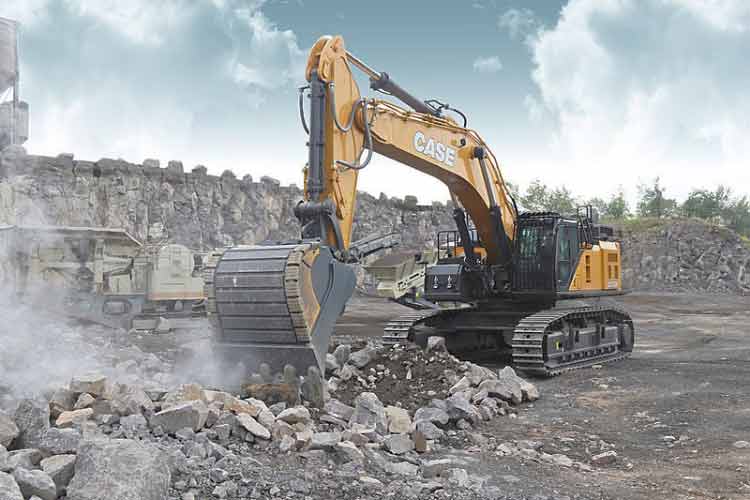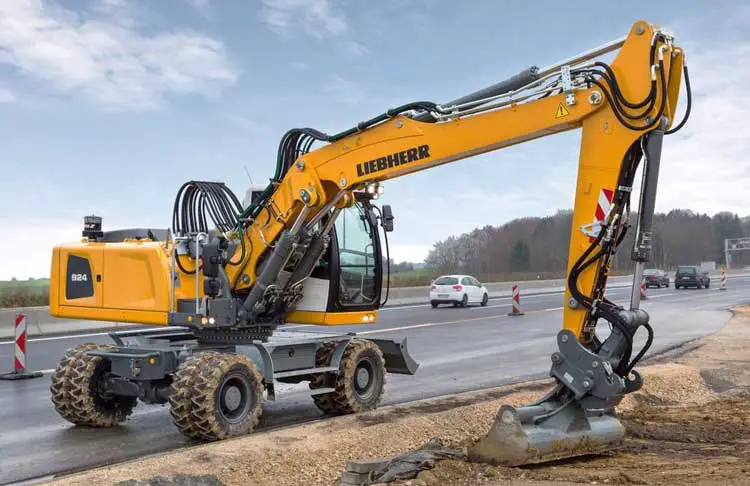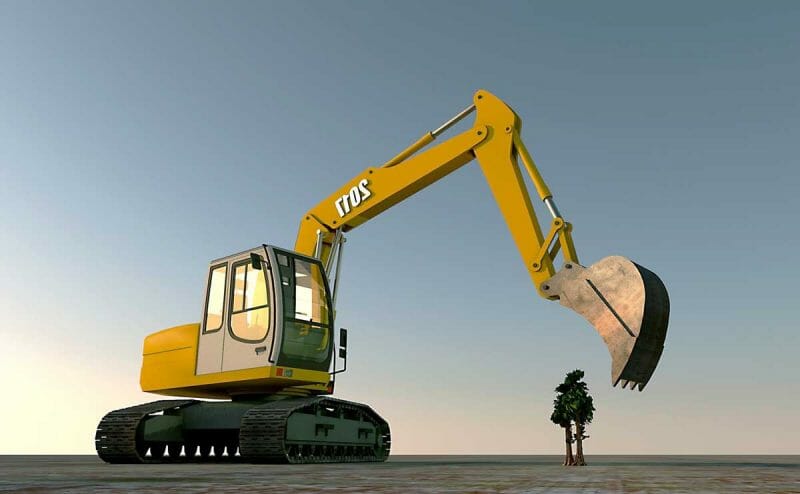The excavator is a type of heavy equipment that is used for construction work. Excavators have various functions, so there are several types of excavators.
So what are the types of excavators and what is it used for?
Excavator Definition
Excavators are heavy equipment used to excavate and transport (load and unload) a material (earth, coal, sand, and others).
What is an Excavator Used For?
This versatile heavy equipment plays an important role in assisting in various difficult jobs in the fields of construction, mining, river normalization, plantations, and other sectors.
The uses of the excavator are:
- Carry out mining activities (mining works).
- Clearing of forest lands for agriculture and plantations.
- Leveling the ground.
- Construction of trenches, irrigation canals, wells and foundations
- Dredge, fill and move material.
Types of Excavator
According to the type of propulsion, excavators are divided into two, namely:
1. Crawler excavator

This type of excavator uses a centipede wheel on the landing gear. This type of excavator uses a hydrostatic transmission powertrain where the engine power is.
The hydraulic system is directed to the planetary gear system found in the final drive, the sprocket to the crawler shoe so that the excavator can move.
2. Wheel excavator

This type of excavator uses wheels where this excavator does not need an undercarriage part like a crawler excavator. Hereinafter, the excavator referred to by the author is a manual wheel excavator.
Excavator Main Parts
In general, the construction of an excavator consists of accessories, upper structures, and lower structures (landing gear and/or wheels), each of which includes:
1. Attachments
Attachments consist of:
a. The boom is an accessory that connects the base frame to the arm with a certain length to reach the loading/unloading distance.
b. The arm is the attachment that connects the boom to the bucket.
c. The bucket is an accessory that is directly related to the material at the time of loading.
d. The track shoe is an accessory that serves as the final motor on a crawler excavator.
e. The cab is an accessory that functions as a place and a guard for the operator when operating the excavator.
2. Upper structures
The upper structure consists of:
a. Cab (for the operator’s operations center),
b. motor / motor,
c. swing motor,
d. Counterweight
3. Lower structures
The landing gear consists of:
a. The track frame is a component consisting of the center frame, track frame, front idler pulley, sprocket, track rollers, and carrier rollers that are the basis of the excavator’s operations.
b. The track shoe is a component that works like a wheel on a vehicle to move an excavator.
Working of Excavator
The working mechanism of a hydraulic excavator is:
The diesel engine turns a pump that then flows hydraulic fluid from the tank to the system and back to the tank.
The components that get the hydraulic fluid distribution and the pump are the bucket cylinder, stick cylinder, boom cylinder, swing motor, and travel motor to produce a certain working condition.
The working conditions of the excavator are divided into six, namely:
1. Swing
Movement when the excavator body and attachment rotate up to 360o.
This movement system is by moving the lever that opens the valve in the control valves containing hydraulic fluid to flow to the swing motor to make the excavator turn with a certain rotation.
2. Left travel shoe.
This movement is divided into two movements, namely the forward movement and the backward movement, which is driven by the valves in the control valves.
The hydraulic energy from the pump will be converted into mechanical energy through the displacement motor.
The travel motor turns the sprocket which then moves the track shoe so that it produces movement in the excavator. Left track shoe offset is left track shoe movement.
3. Right travel shoe
This movement is divided into two movements, namely the forward movement and the backward movement, which is driven by the valves in the control valves.
The hydraulic energy from the pump will be converted into mechanical energy through the displacement motor.
The travel motor turns the sprocket which then moves the track shoe to produce movement in the excavator. Traveling with the right shoe is the movement of the right track shoe.
4. Boom (lift down)
The movement of the boom is done by the boom cylinder. This motion system is accomplished by moving the lever at the operator station to open the boom lift valve and the boom lower valve on the control valve associated with the boom cylinder.
The boom will perform a lifting movement if the boom lift valve is open while the boom lower valve is open.
5. Arm (In-Out)
The arm movement is performed by the arm cylinder. This movement system is regulated by the inlet arm valve and the outlet arm valve. The boom will make a lifting motion if the boom outlet valve is open while the boom inlet valve is closed.
Fluid will flow from the arm outlet valve and pressurize the piston arm cylinder. Regarding the downward movement of the arm, the conditions of the inward and outward arm valve apply differently.
6. Bucket (crawl-dump)
The movement of the bucket is done by the bucket cylinder. This movement system is governed by the movement of the drag bucket valve and the discharge bucket valve.
The bucket will perform a lift (dump) motion if the bucket dump valve is open while the bucket drag valve is closed.
At that time, fluid will flow from the bucket dump valve and pressurize the bucket cylinder piston. While the bucket motion to bend (crawl), the condition of the advance bucket valve and the bucket dump valve is opposite










